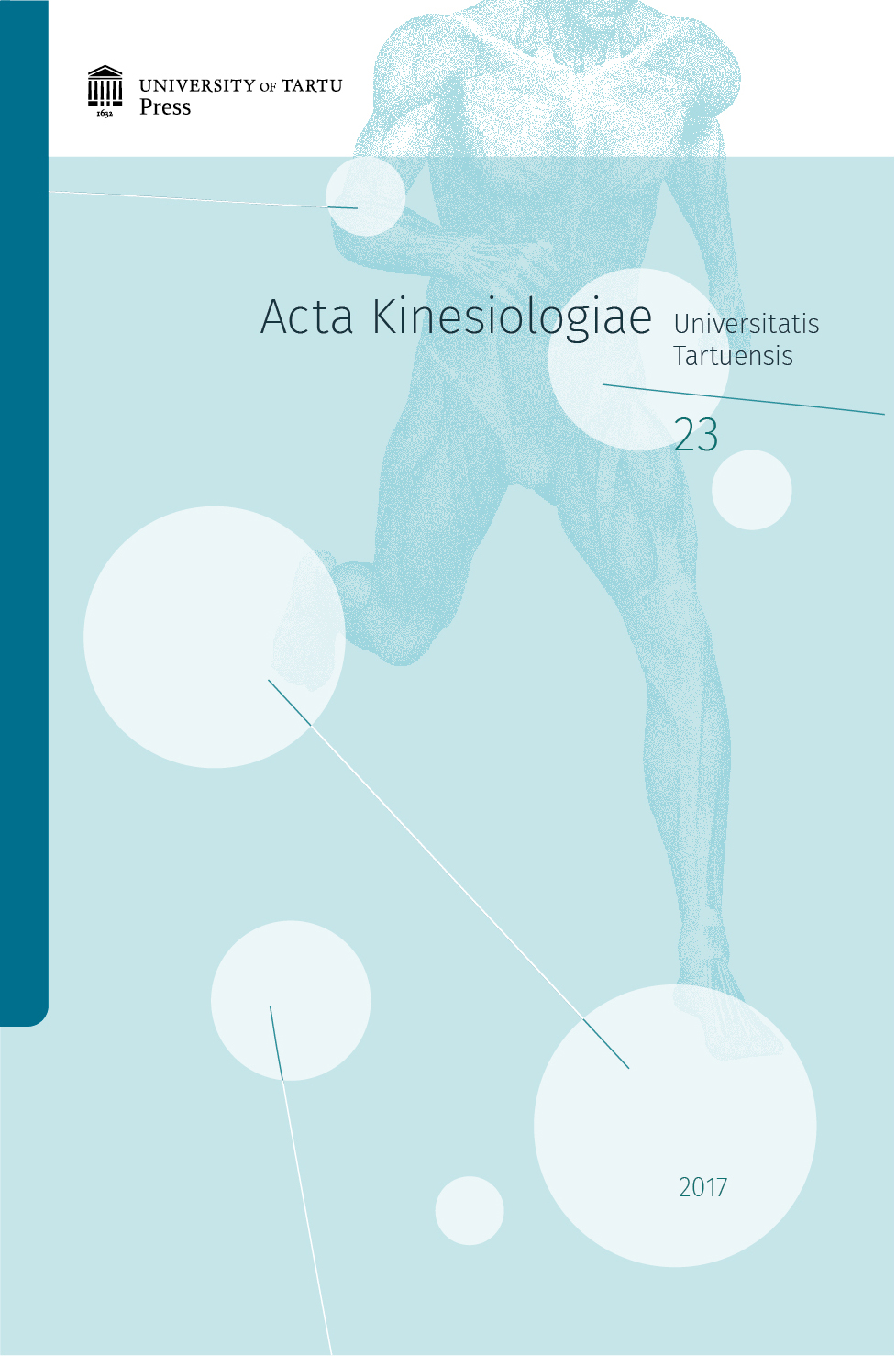Microsoft Kinect-based differences in lower limb kinematics during modified timed up and go test phases between men with and without Parkinson’s disease
DOI:
https://doi.org/10.12697/akut.2017.23.08Keywords:
Microsoft Kinect, Parkinson’s disease, modified TUG test, sitting-to-walkingAbstract
The aim of the study was to analyse with Microsoft Kinect (Kinect) the differences in lower limb kinematics during sub-phases of modified Timed Up and Go test (modTUG) in men with Parkinson’s disease (PD) compared to healthy age-matched male individuals. Eight men with mild-to-moderate PD (age 67.5±4.5 yrs) and eight healthy men (age 69.8±8.0 yrs) participated. Kinect along with KinectPsyManager (v1.0) and Matlab2016b software was used for data collection. Selected lower limb kinematics and gait speed (GS) were calculated during sittingto- walking (STW) transition while performing modTUG. According to Kinect men with mild to moderate PD did not differ from healthy counterparts in aspects of postural characteristics of STW, with the exception of smaller distance between knees while sitting (p<0.001). Men with PD were found to perform the walking phase of STW transition slower (p<0.01) and with slower GS (p<0.01) comparing to healthy men. In conclusion, compared to healthy men, Kinect detects smaller distance between knees during sitting before transitioning from STW in men with mild to moderate PD. In addition, men with PD also demonstrated slower GS and a longer walking phase of STW transition in comparison to healthy men.


